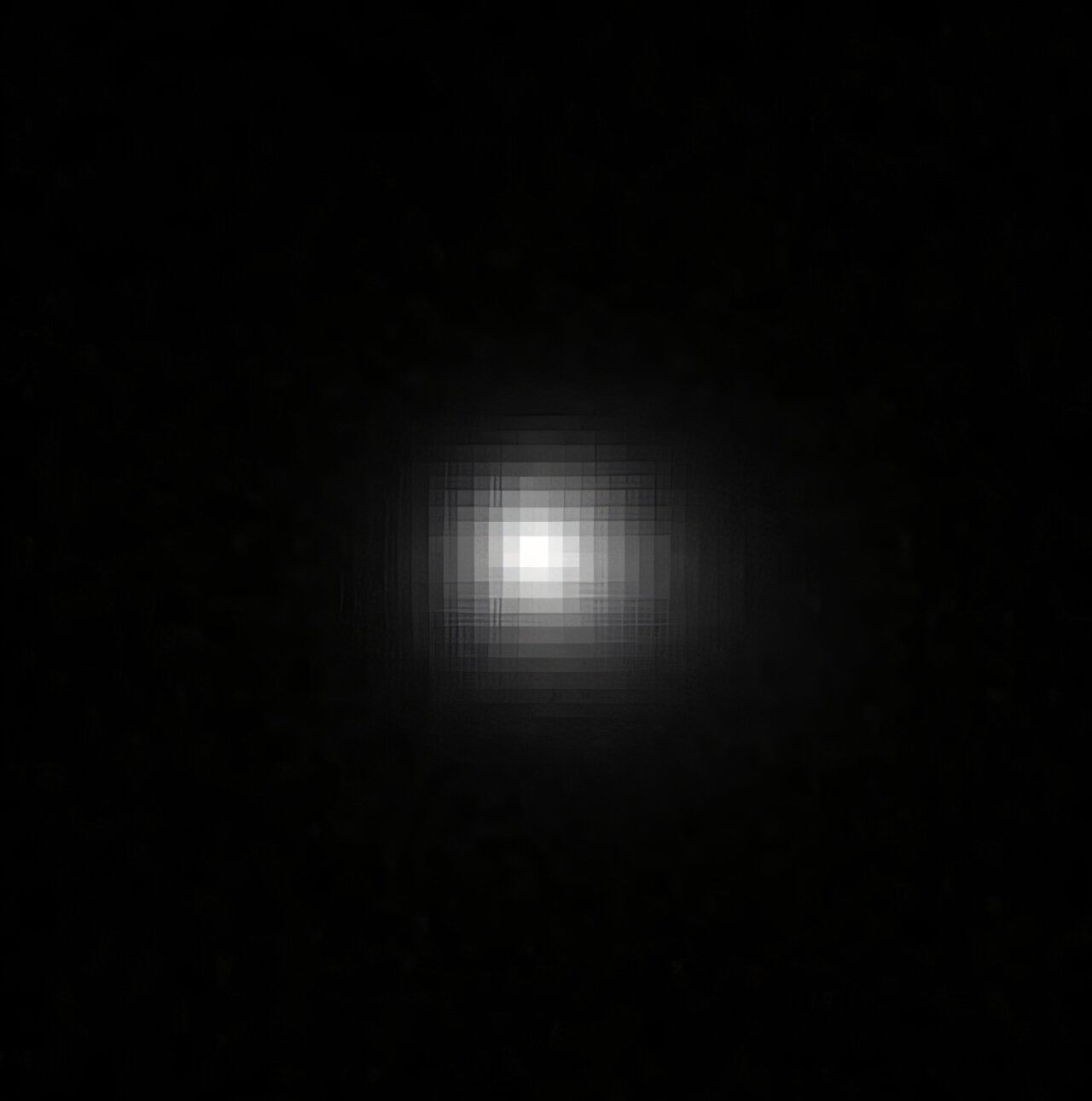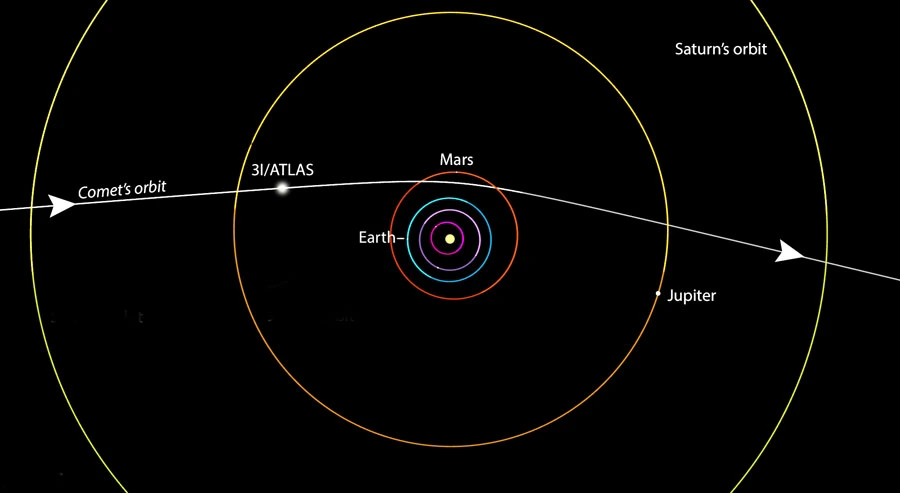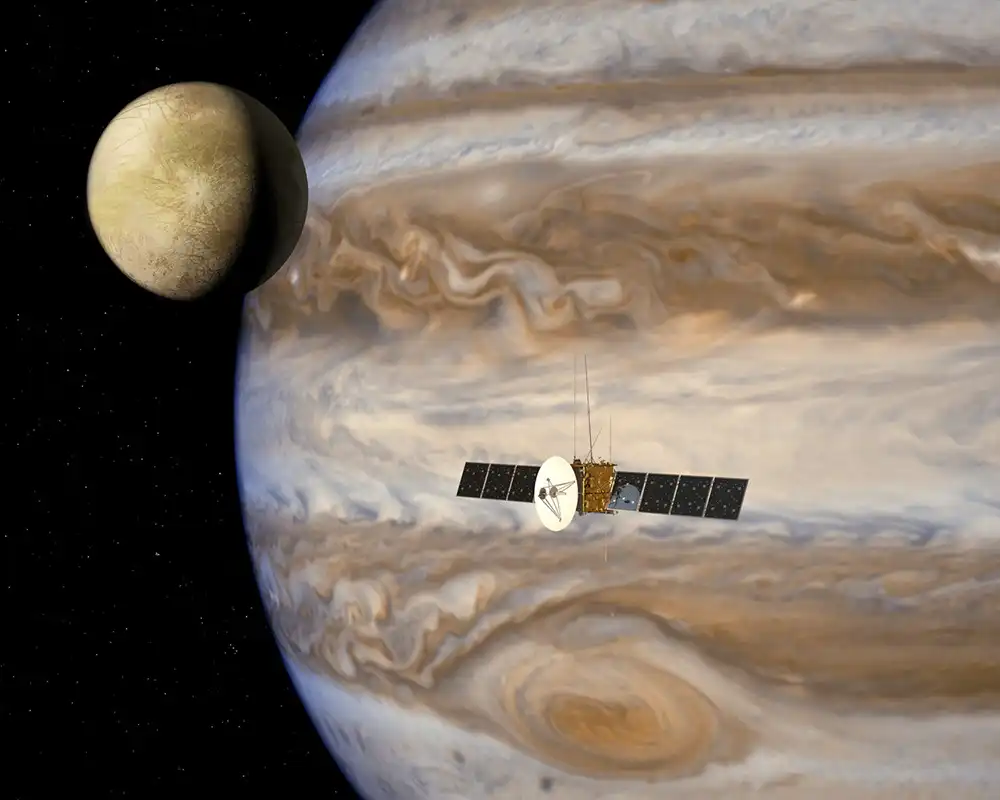From :- Sky & Telescope
By :- David L . Chanler
Edited by :- Amal Udawatta

C.O. Chandler et al.
Observations have revealed the comet’s fuzzy coma, hinted at a weird tail, and suggested an ancient history. Plus, some missions might keep observing the interstellar comet when it ducks behind the Sun.
Telescopes on Earth and above it have their eyes on the third-ever interstellar object ever seen inside our solar system, Comet 3I/ATLAS. Already, telescopes including the 8.4-meter Vera C. Rubin Observatory, the Very Large Telescope, and the Gemini South telescope have spent time on the object. Just last week, the Hubble Space Telescope joined in, and the James Webb Space Telescope is expected to do so in the coming days.
Observations have revealed the comet’s fuzzy coma, hinted at a weird tail, and suggested an ancient history. Plus, some missions might keep observing the interstellar comet when it ducks behind the Sun.
Telescopes on Earth and above it have their eyes on the third-ever interstellar object ever seen inside our solar system, Comet 3I/ATLAS. Already, telescopes including the 8.4-meter Vera C. Rubin Observatory, the Very Large Telescope, and the Gemini South telescope have spent time on the object. Just last week, the Hubble Space Telescope joined in, and the James Webb Space Telescope is expected to do so in the coming days.
This unusual comet is the second extrasolar comet ever seen, after Comet 2I/Borisov, found in 2019. (The first interstellar object, 1I/ ‘Oumuamua, didn’t appear to be a comet.) 3I/ATLAS is zooming through the solar system far faster than either of the previous interstellar objects and, also unlike them, is on a trajectory very close to the ecliptic — tilted less than 5° from the plane of the solar system’s planets.
The Coma
Bryce Bolin (Eureka Scientific), lead author of one of the first papers detailing what we know about 3I/ATLAS, after its discovery by Larry Denneau (University of Hawai‘i), has been observing the object using multiple telescopes, including the Palomar Observatory.
“We were able to determine that the comet had a coma about two or three arcseconds wide,” Bolin says. Some observers questioned whether these images showed a true coma or merely a smearing due to the object’s motion, but a new paper, posted last week on the astronomy arXiv preprint server by Colin Chandler (University of Washington) and collaborators, came to a similar conclusion using the observations from the Rubin Observatory.
The Rubin team realized that their telescope had — unbeknownst to them — imaged the object starting 10 days before its discovery. From more than 100 images taken over the ensuing two weeks, the researchers found that the apparent coma grew slightly during that period. The team estimated from those images that the nucleus spans at most 11.4 km (7 miles).
Although there is no formal size estimate in the earlier Bolin et al. paper, Bolin says he estimates it’s even smaller, in the range of 0.5 to 1 km. Bolin’s team’s smaller size estimate is consistent with predictions made by Avi Loeb (Harvard University), based on the statistics of interstellar objects that have been observed so far. If 3I/ATLAS were much larger than that, Loeb argued, that would imply a much greater population of smaller interstellar comets, which should have been observed by now if they existed.
The Tail
The Rubin observations also show hints of a dusty tail, but oddly this elongation points directly toward the Sun. Typically, the push of the Sun’s radiation moves dust in comet’s tails so that it points away from the Sun. Bolin suggests that this may indicate “that massive particles are being ejected in the solar direction, and they’re too heavy to be blown by the solar radiation at the distance the comet is from the Sun, so they’re continuing to go forward a little bit toward the Sun.”
The Origin
Comet 3I/ATLAS’s origin is still mysterious. However, a new analysis by Matthew Hopkins (University of Oxford, UK) and colleagues suggests that the object might have come from the Milky Way’s thick disk, our galaxy’s vertically extended disk of older stars.
Hopkins’ team arrives at this conclusion by comparing the steep incoming trajectory to the expected orbits of interstellar objects in the Milky Way. If the finding pans out, it would make 3I/ATLAS the oldest comet ever seen, as much as 7 billion years old — even more ancient than the solar system itself.
The Trajectory

JPL HORIZONS, with additions by Bob King
As Comet 3I/ATLAS continues on its way, it will pass relatively close to Jupiter (0.36 au), Mars (1.5 au), and Venus (0.7 au), but its closest approach to Earth later this year is farther away, at 1.8 au. It’ll therefore be relatively faint in our skies come December.
Moreover, when the comet reaches its closest approach to the Sun, or perihelion, it will be almost directly behind the Sun as seen from Earth. That will prevent Earth-based observations just when interesting behavior might be occurring. For example, Comet 2I/Borisov shed a small fragment at about the time of its perihelion passage; such fragmentation around perihelion is not uncommon among comets.
But while the comet will be hidden from Earth’s view around perihelion — even the Hubble and Webb space telescopes can’t point near it during that period because it will be too close to the Sun’s glare — other spacecraft might fill the gap.
Capturing the Comet at Perihelion
Marshall Eubanks (Space Initiatives Inc.) has calculated that several interplanetary spacecraft as well as Mars orbiters or rovers could have a clear view of 3I/ATLAS while it’s out of Earth’s view. He has been communicating with members of the teams managing these missions.

ESA / AOES
The two best candidates, Eubanks tells Sky & Telescope, are the Jupiter Icy Moons Explorer (JUICE), and Psyche, which is on its way to the asteroid of the same name. JUICE, he says, “will have a wonderful view of 3I,” from less than a third of an astronomical unit (au) away (about 10 times closer than the comet’s distance from Earth at that time), and has some instruments that could do useful observations. But making a sudden change in such an expensive mission, which has been many years in planning and development, is far from trivial. Any changes would have to be developed carefully to avoid endangering the primary mission, and no decision has been made yet by that team.
Psyche will be similarly well placed, about 0.4 au away from 3I/ATLAS. But it’s under steady propulsion from its ion drive, which might make observing the comet tricky. Robotic observers at or around Mars might have an easier time making the adjustments needed to make useful observations, Eubanks says.
One way or another, it would be useful to have observational coverage of the comet’s entire journey through the solar system. Astronomers still regret that there were such limited observations of the two previous interstellar objects, because their discoveries occurred relatively late in their solar system passes.
This time, continuous coverage could capture unusual activity takes place such as fragmentaion. As Eubanks says, “it would be very nice to be able to observe that in real time, as opposed to just trying to guess what happened afterwards.”
Comments
Post a Comment